G-PON
The Passive Optical Network (PON) solution is advantageous for larger facilities.
Do you have large premises, many floors, or many users?
If so, this is a great opportunity to reduce your total cost of ownership.
What is GPON?
Gigabit Passive Optical Network (G-PON) is a type of PON (Passive Optical Network), an international optical communication standard. The architecture basically splits optical signals using a passive optical splitter to share a single fiber line among multiple subscribers.

G-PON is widely used for FTTH services provided by carriers and cable TV providers. Another application is LANs built with passive fiber to convert signals without a power supply. Companies like Nokia and KCME call these passive optical LANs (POLs).
What is Passive Optical LAN (POL)?
This solution uses G-PON technology instead of metal cables to build a high-speed fiber LAN. It reduces the number of distribution switches and other devices previously required on each floor, saving power consumption and floor space.
*The names of companies, products, and services mentioned on this webpage are registered trademarks or trademarks of their respective owners.
*KCME is a distributor of Nokia Solutions and Networks Japan G.K.
Scenarios where G-PON is especially recommended
If you want to build or improve a wired LAN in the following scenarios, G-PON technology is advantageous in terms of operating costs, communication speed, and maintainability.



How much cost savings
How much does POL reduce costs?
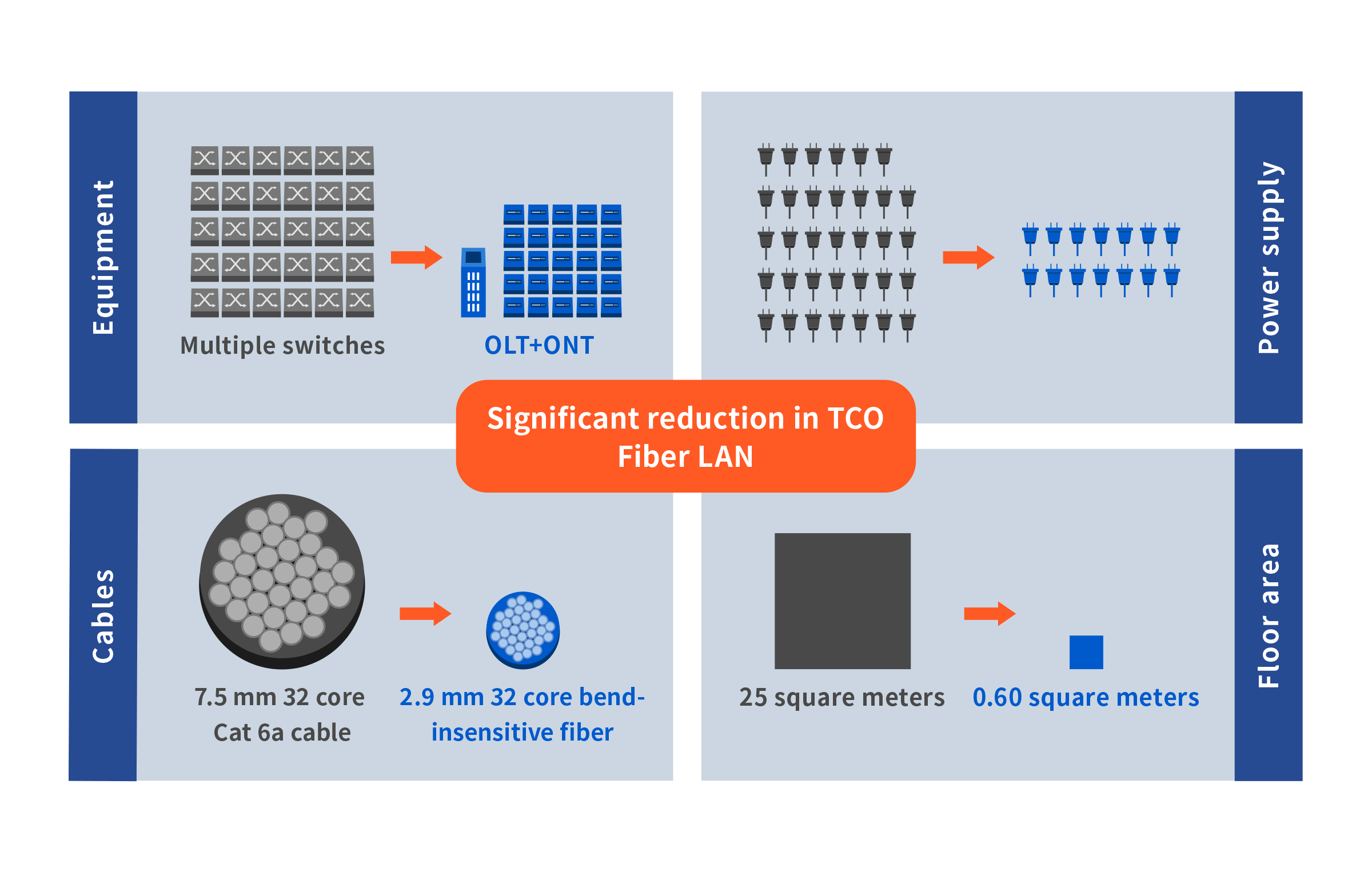
Features
-
Feature #01Bandwidth per PON portDownstream:2.5Gbps(10Gbps for XGS)
Upstream:1.2Gbps (10Gbps for XGS)
-
Feature #02Bandwidth per user1 Gbps (or 10 Gb/s XGS)

-
Feature #03Intermediate equipment, split, and distancePassive, split ratio: 1:128, distance limit: 20 km

-
Feature #04Included servicesData, voice, video, and Wi-Fi backhaul

-
Feature #05Next-generation standards support10/25 Gbps support

Solution image
Efficiently reduce the total cost of ownership (TCO) with fewer devices.
A typical enterprise fiber network requires many expensive switches and other equipment. G-PON, however, uses passive splitters instead of such devices for splitting in a building or on each floor, resulting in fewer switches.
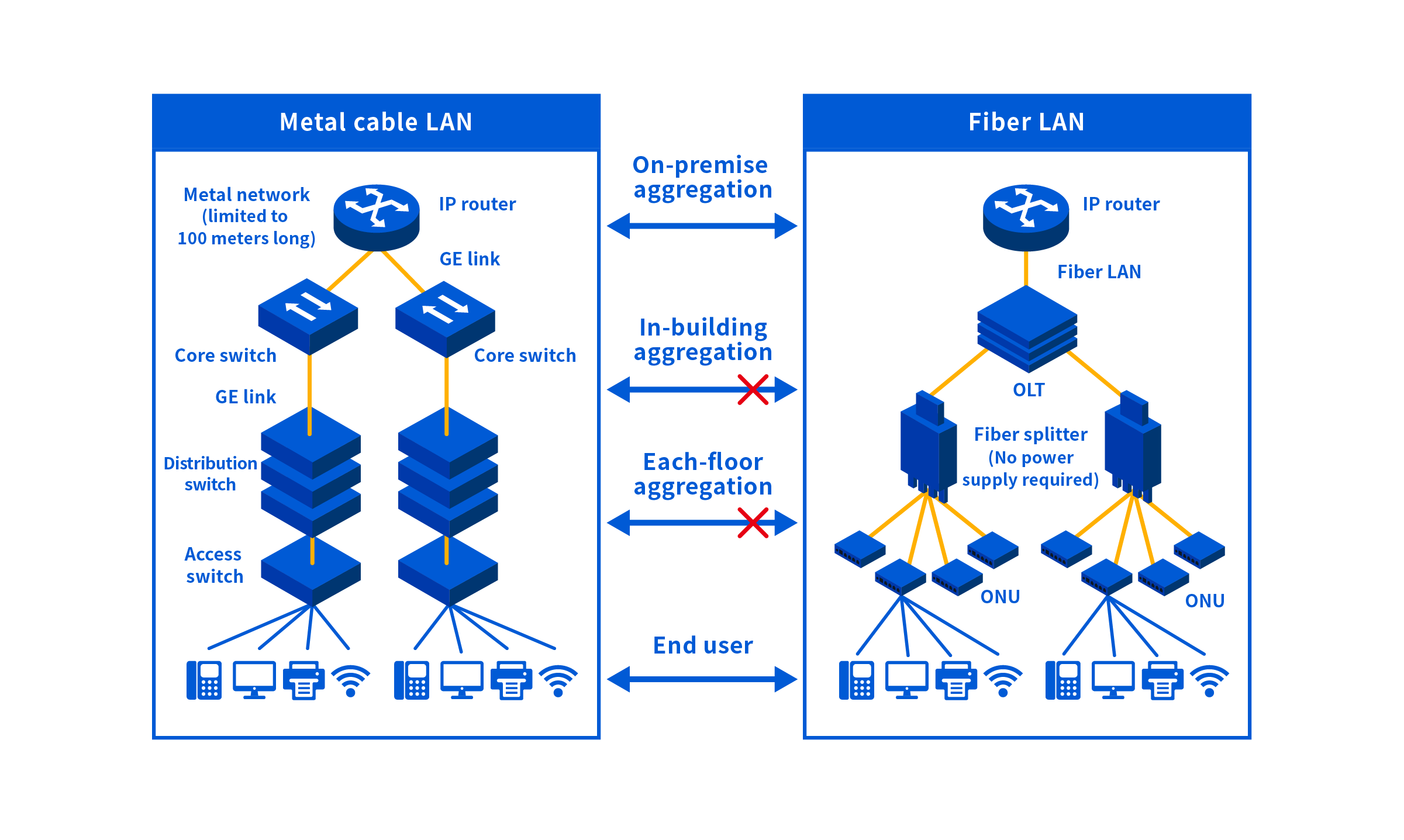
Three benefits of equipment consolidation
-

Energy cost savings -

Simplified operations and improved maintainability -
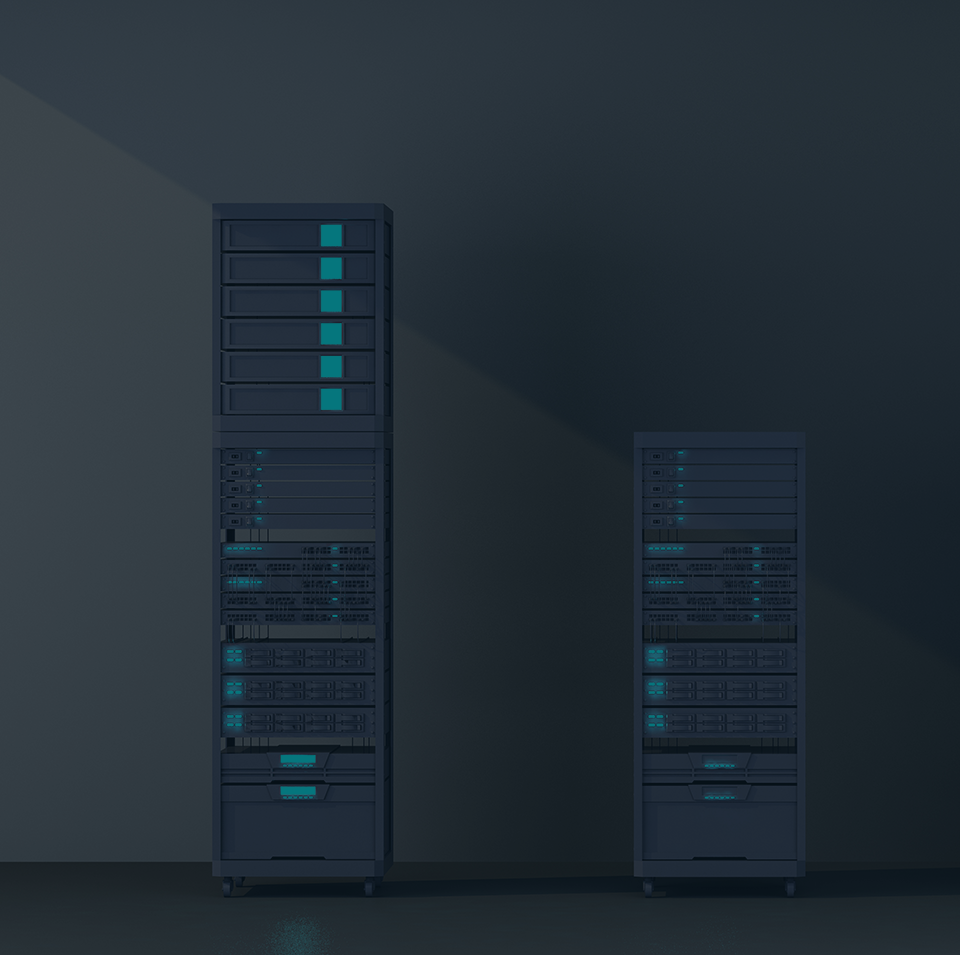
Space savings
Actual examples of G-PON networking
-
Providing high-speed network infrastructure for a large resort complex
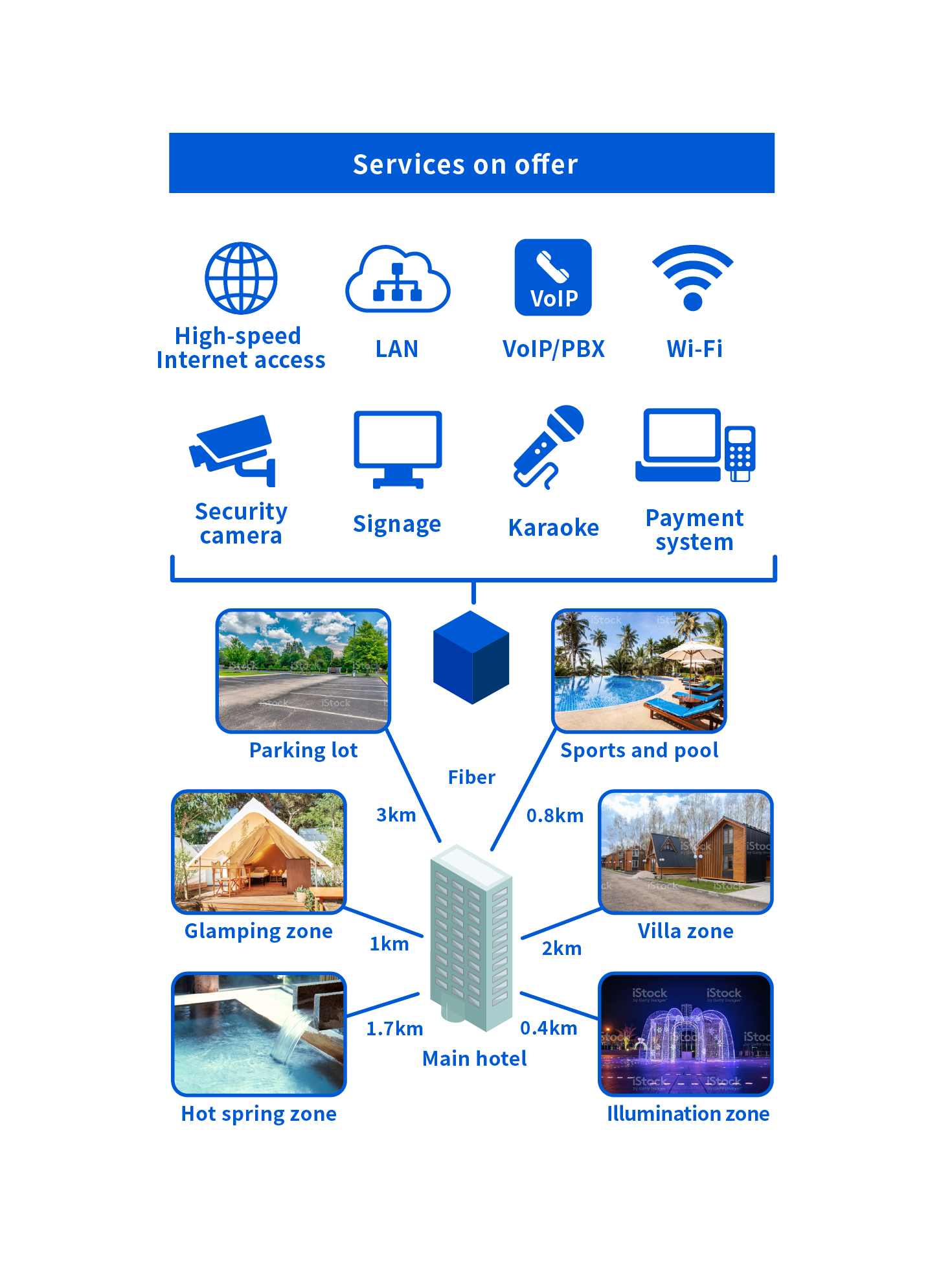
- Industory
- Service
- Compatible range
- IP phone, Wi-Fi, Internet, LAN, Surveillance cameras, karaoke, payment systems
Adopted in a large resort complex
By connecting a resort hotel and other facilities scattered throughout a large complex with fiber and OLTs, the project created a high-speed network infrastructure that supports a variety of service requirements, including security cameras, IP telephony, guest Wi-Fi, and business LAN.
-
Providing high-speed network infrastructure to stadiums
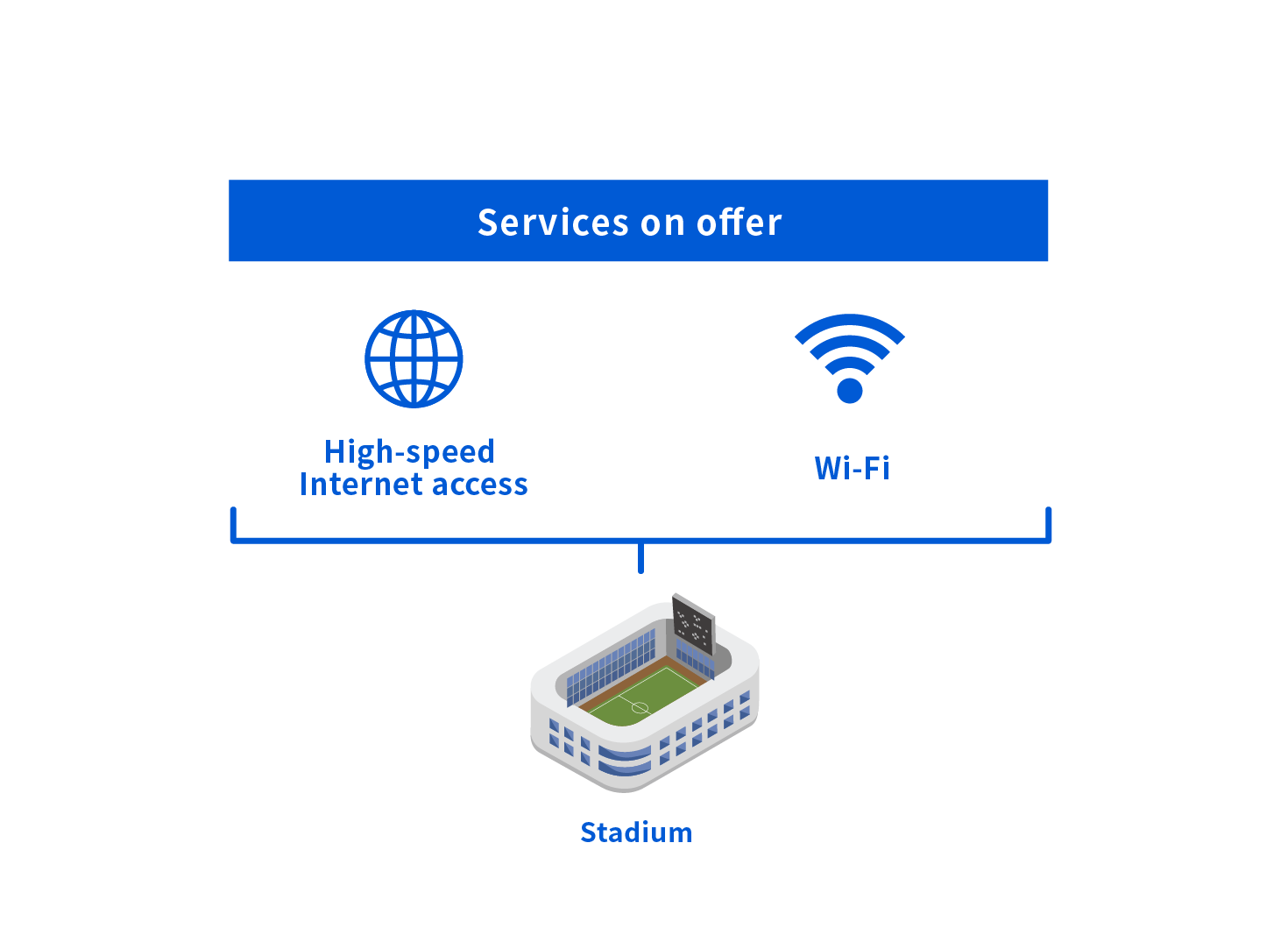
- Industory
- Service
- Compatible range
- A guest Wi-Fi, Internet access
Adopted in a sports stadium
We installed fiber and access points in facilities throughout a large stadium to provide a guest Wi-Fi infrastructure.
Contact Us
We will contact you within 1-2 business days.
Please feel free to contact us.